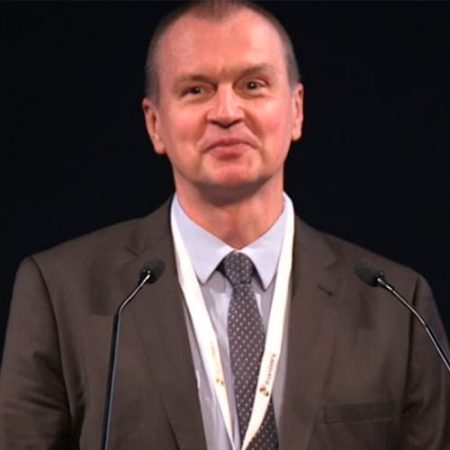DR. MIKHAIL A. LEBEDEV
Senior Research Scientist at Duke University Medical Center and Scientific Head
Mikhail A. Lebedev, Ph.D. is the Senior Research Scientist at Duke University Medical Center and Scientific Head and Chief Research Scientist at the Center for Bioelectric Interfaces in the Institute of Cognitive Neuroscience from National Research University Higher School of Economics in Moscow, Russia.
He specializes in Brain-Machine Interfaces (BMI) and has conducted research in this field all over the world. He is immersed in the use of BMIs to enhance and augment human potential. He agrees that we have already made some great advances in BMI research.
“The most successful BMI system currently in use is the cochlear implant where stimulatory electrodes are implanted within the auditory nerve. These have been really successful, so people who couldn’t hear, now have the ability to do so. I think that this type of sensory BMI will continue to develop,” he says.
He also predicts that before too long, we will see a major breakthrough in BMI systems, which will lead to new developments in visual prosthetic devices, which will enable blind people to see. He also foresees rapid advancement in BMI systems designed to restore motor movements and cure paralysis. We have already seen great advancements in neuroprosthetics, such as bionic arms and exoskeletons for restoration of locomotion. According to Mikhail, as development in this area continues, such prosthetics will become more sophisticated and more streamlined.
Mikhail was born in Moscow in 1963. He earned his Master’s Degree of Science in Physics and Technology from the Moscow Institute of Physics and Technology (MIPT) in 1986 where he became interested in the physics of living systems. Driven by this interest, he joined the laboratory of Victor Gurfinkel at the Institute for the Problems of Information Transmission as a trainee. Mikhail investigated the role of vision (e.g., peripheral versus central visual field) in human postural control.
After his graduation from MIPT, he joined Gurfinkel’s laboratory as Junior Research Scientist at the Institute for Problems of Information Transmission for 5 years, between 1986 and 1991. During this period, he conducted a number of studies on the control of posture and movements in humans. In particular, he studied tonic muscular contractions evoked by vibratory stimulation of muscle receptors, post-contraction postural effects (Kohnstamm’s phenomenon), neck reflexes, and electromyographic patterns. He also conducted a study of motor unit suppression by limb ischemia.
In 1991, after the Soviet “iron curtain” was lifted and opportunities for international scientific collaboration emerged, Mikhail moved to the United States, to the laboratory of Randall Nelson at the Department of Anatomy and Neurobiology of the University of Tennessee (UT), Memphis. Here he learned neurophysiological methods for recordings from brain neurons in awake, behaving monkeys.
Mikhail underwent his Ph.D. training between 1991 and 1995 and earned his Ph.D. in Neurobiology and Anatomy at the Health Science Center from the University of Tennessee, Memphis in 1995. His Ph.D. thesis was an investigation of rhythmically firing (spontaneously or driven by vibrotactile stimulation) neurons in the primary somatosensory cortex. Additionally, he conducted research on the basal ganglia involvement in motor control, attention, and motivation.
Between 1995 and 1997, Mikhail conducted postdoctoral research at the laboratory of Mathew Diamond at La Scuola Internazionale Superiore di Studi Avanzati (SISSA) in Trieste, Italy. He employed multielectrode recordings to study experience-dependent cortical plasticity in the rat barrel cortex.
In 1997, Mikhail became researcher in the laboratory of Steven Wise at the National Institute of Mental Health (NIMH), Bethesda, Maryland. For the next 5 years he conducted, among others, a series of neurophysiological studies in awake, behaving monkeys, where he elucidated cortical mechanisms of motor control, spatial attention, working memory, and perceptions.
In 2002, Mikhail moved to Duke University to work with Miguel Nicolelis. Here Mikhail supervises the primate laboratory. The major focus of this research is brain-machine interfaces (BMIs) that enable direct cortical control of assistive devices that reproduce limb movements. These are BMIs for reaching and grasping, BMIs that reproduce bipedal locomotion patterns, as well as sensorized BMIs that both extract motor commands from the brain and deliver feedback information using intracortical microstimulation of the somatosensory cortex.
